TC
Auto Added by WPeMatico
Auto Added by WPeMatico
Sometimes fake news lives inside of Facebook as photos and videos designed to propel misinformation campaigns, instead of off-site on news articles that can generate their own ad revenue. To combat these politically rather than financially motivated meddlers, Facebook has to be able to detect fake news inside of images and the audio that accompanies video clips. Today its expanding its photo and video fact checking program from four countries to all 23 of its fact-checking partners in 17 countries.
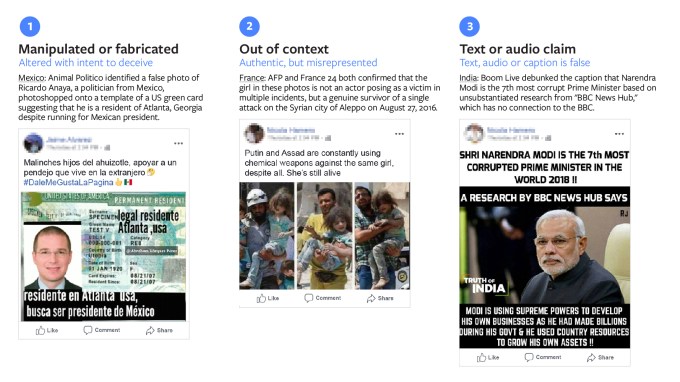
“Many of our third-party fact-checking partners have expertise evaluating photos and videos and are trained in visual verification techniques, such as reverse image searching and analyzing image metadata, like when and where the photo or video was taken” says Facebook product manager Antonia Woodford. “As we get more ratings from fact-checkers on photos and videos, we will be able to improve the accuracy of our machine learning model.”
The goal is for Facebook to be able to automatically spot manipulated images, out of context images that don’t show what they say they do, or text and audio claims that are provably false.
In last night’s epic 3,260-word security manifesto, Facebook CEO Mark Zuckerberg explained that “The definition of success is that we stop cyberattacks and coordinated information operations before they can cause harm.” That means using AI to proactively hunt down false news rather than waiting for it to be flagged by users. For that, Facebook needs AI training data that will be produced as exhaust from its partners’ photo and video fact checking operations.
Facebook is developing technology tools to assist its fact checkers in this process. “we use optical character recognition (OCR) to extract text from photos and compare that text to headlines from fact-checkers’ articles. We are also working on new ways to detect if a photo or video has been manipulated” Woodford notes, referring to DeepFakes that use AI video editing software to make someone appear to say or do something they haven’t.
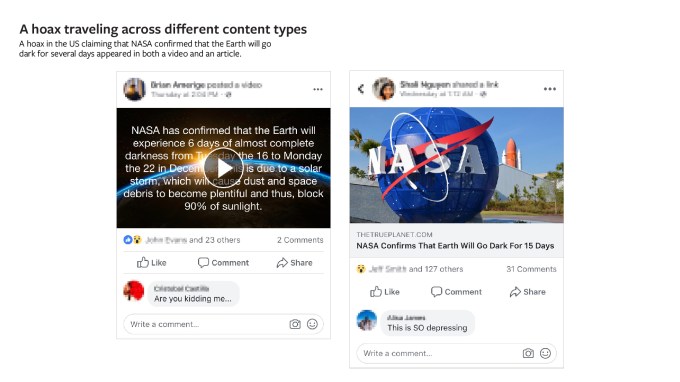
Image memes were one of the most popular forms of disinformation used by the Russian IRA election interferers. The problem is that since they’re so easily re-shareable and don’t require people to leave Facebook to view them, they can get viral distribution from unsuspecting users who don’t realize they’ve become pawns in a disinformation campaign.
Facebook could potentially use the high level of technical resources necessary to build fake news meme-spotting AI as an argument for why Facebook shouldn’t be broken up. With Facebook, Messenger, Instagram, and WhatsApp combined, the company gains economies of scale when it comes to fighting the misinformation scourge.
Powered by WPeMatico
PlayVS, the startup bringing an e-sports infrastructure to the high school level, has today announced that it will partner with Riot’s League of Legends for its early-access season.
High school students across five states, including Connecticut, Georgia, Kentucky, Massachusetts, and Rhode Island, will be able to sign up to play for their school in Season Zero, which begins in October 2018.
Around 200 colleges and universities across the U.S. and Canada are offering esports scholarships, but without any infrastructure around high school esports, those recruiters are left at the mercy of the publishers and a grueling tournament schedule.
Meanwhile, young gamers who want to go pro are forced to gain a following via Twitch, or hit up all those tournaments and find a way to shine.
PlayVS offers access to recruiters while giving high school students the chance to play competitive esports at the high school level. The startup, backed by Science with $15.5 million in funding, has partnered with the NFHS (essentially the NCAA of high school) to offer turnkey competition through its dashboard.
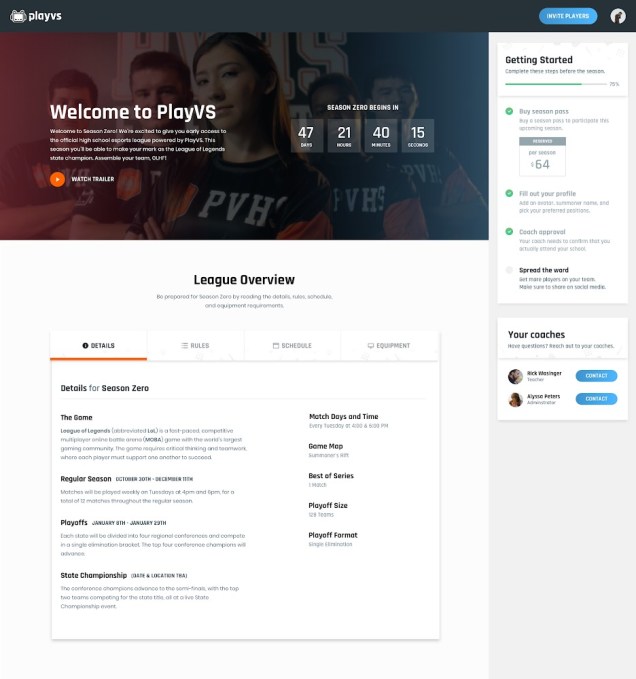
PlayVS partners with publishers, and lets players sign up, receive team and league schedules, check standings and stats, and actually play the game all within the PlayVS online portal.
PlayVS has a no-cut policy, letting high schools submit as many unique teams as they like. Given that the company makes money from players themselves ($64/season/player), it makes sense that the company would take a ‘the more the merrier’ approach.
The company then divides up those teams into conferences, and the teams play to be conference champions, advance to semi-finals, and eventually head to the state championship. All the games will be played from the students’ own school through the online portal, except for the State Championship tournament which will have a live spectator audience.
This season, which includes five states, gives PlayVS a chance to roll out the platform to a smaller pool of players and work out any issues ahead of the inaugural season, which starts February 2019.
Powered by WPeMatico
Themed collections of user generated content chosen by news publishers for viewing on and off Snapchat are the teen social network’s next great hope for relevance. Today Snap launches Curated Our Stories with the help of 20 partners like CNN, Cosmopolitan, Lad Bible, and NowThis. Instead of sifting through and selecting submissions to Our Story all by itself around events, holidays, and fads, these publishers can create slideshows of Snaps about whatever they want. They’ll both be featured in Snapchat Discover that sees 75 million Our Stories viewers per month, but also on the publishers’ own properties thanks to Snap’s embeds that have been underused since their January launch.
To entice partners, Snap has built in monetization from day one, splitting revenue with publishers from ads run in the Our Stories they curate. That’s in sharp contrast to Snap’s work with independent creators, where it still won’t split revenue with them directly, though at least it’s finally connecting them with brand sponsors.
Snap’s head of Stories everywhere Rahul Chopra tells me that in exchange for its cut, Snap provides a content management system that publishers can use to search through submitted Snaps using a variety of filters like keywords in captions and locations. A human at Snap will also moderate Curated Our Stories to ensure nothing objectionable slips through.
The new revenue stream could help Snap offset its declining user count by squeezing more cash out of each user by exposing them to more content and ads, or score it new users through embedded Curated Our Stories on its partners’ apps and sites. Snap beat revenue expectations last quarter but it still lost $353 million, contributing to a share price decline that hit an all-time low yesterday.
Snap first created Our Stories in 2014 to let people get the perspectives of tons of different attendees to music festivals and sporting matches. With time it expanded to creating college-specific Our Stories and ones of more relatable activities like enjoying Fridays. Snapchat also lets users search its publicly submitted content, but seems to have found people are too lazy or unimaginative to do it, or the uncurated content isn’t high quality enough to be worth watching.
The full list of publisher partners is: Brut, CNN, Cosmopolitan, Daily Mail, Daquan, Dodo, Harper’s Bazaar, iHeart, The Infatuation, Jukin, Lad Bible, Love Stories TV, Mic, NBC News, NBC Sports, NBC, Today Show, New York Post, NowThis, Overtime, Refinery 29, Telemundo, The Tab, Viacom, Wave.TV, and Whalar. They run the gambit from traditional publishers to online news sources, and includes Snapchat’s Yellow startup accelerator portfolio company Love Stories TV, plus CNN’s return to Discover after cancelling its daily anchored news show there.
The curation possibilities are infinite. Partners could create reels of reactions to major news stories or shots from people with eyes on the ground at the scene of the action. They could highlight how people use a certain product, experience a particular place, or use a certain Snapchat creative feature. The publishers might produce daily or weekly collections around a topic or try a wide range of one-offs to surprise their viewers. You could think of it as a little bit like YouTube playlists, but cobbled together from real-time short-form submissions that might be too brief to make an impact on their own.
This is the start of Snapchat crowdsourcing not only content but curation to dig out the best citizen journalism, comedy, and beauty shot on its app and turn it into easily consumable compendiums. Given that Snapchat lost three million users last quarter, it could use the help keeping viewers coming back. But like most everything it launches, if Curated Our Stories blows up, you can bet Facebook and Instagram will turn on their copying machines.
Powered by WPeMatico
Mark Zuckerberg wants you to know he’s trying his damnedest to fix Facebook before it breaks democracy. Tonight he posted a 3,260-word battle plan for fighting election interference. Amidst drilling through Facebook’s strategy and progress, he slips in several notable passages revealing his own philosophy.
Zuckerberg has cast off his premature skepticism and is ready to command the troops. He sees Facebook’s real identity policy as a powerful weapon for truth other social networks lack, but that would be weakened if Instagram and WhatsApp were split off by regulators. He’s done with the finger-pointing and wants everyone to work together on solutions. And he’s adopted a touch of cynicism that could open his eyes and help him predict how people will misuse his creation.
Here are the most important parts of Zuckerberg’s security manifesto:
Zuckerberg embraces his war-time tactician role
“While we want to move quickly when we identify a threat, it’s also important to wait until we uncover as much of the network as we can before we take accounts down to avoid tipping off our adversaries, who would otherwise take extra steps to cover their remaining tracks. And ideally, we time these takedowns to cause the maximum disruption to their operations.”
The fury he unleashed on Google+, Snapchat, and Facebook’s IPO-killer is now aimed at election attackers
“These are incredibly complex and important problems, and this has been an intense year. I am bringing the same focus and rigor to addressing these issues that I’ve brought to previous product challenges like shifting our services to mobile.”

Balancing free speech and security is complicated and expensive
“These issues are even harder because people don’t agree on what a good outcome looks like, or what tradeoffs are acceptable to make. When it comes to free expression, thoughtful people come to different conclusions about the right balances. When it comes to implementing a solution, certainly some investors disagree with my approach to invest so much in security.”
Putting Twitter and YouTube on blast for allowing pseudonymity…
“One advantage Facebook has is that we have a principle that you must use your real identity. This means we have a clear notion of what’s an authentic account. This is harder with services like Instagram, WhatsApp, Twitter, YouTube, iMessage, or any other service where you don’t need to provide your real identity.”
…While making an argument for why the Internet is more secure if Facebook isn’t broken up
“Fortunately, our systems are shared, so when we find bad actors on Facebook, we can also remove accounts linked to them on Instagram and WhatsApp as well. And where we can share information with other companies, we can also help them remove fake accounts too.”‘
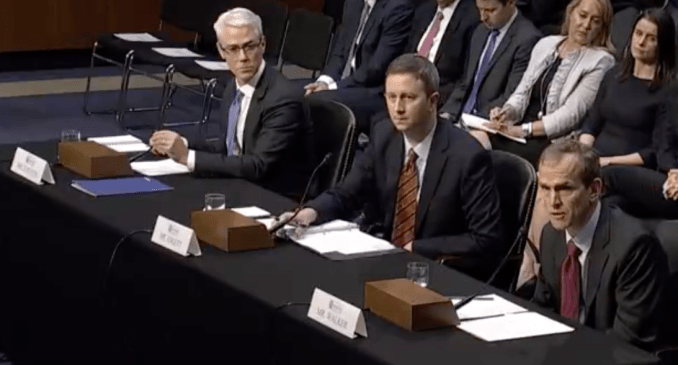
Political ads aren’t a business, they’re supposedly a moral duty
“When deciding on this policy, we also discussed whether it would be better to ban political ads altogether. Initially, this seemed simple and attractive. But we decided against it — not due to money, as this new verification process is costly and so we no longer make any meaningful profit on political ads — but because we believe in giving people a voice. We didn’t want to take away an important tool many groups use to engage in the political process.”
Zuckerberg overruled staff to allow academic research on Facebook
“As a result of these controversies [like Cambridge Analytica], there was considerable concern amongst Facebook employees about allowing researchers to access data. Ultimately, I decided that the benefits of enabling this kind of academic research outweigh the risks. But we are dedicating significant resources to ensuring this research is conducted in a way that respects people’s privacy and meets the highest ethical standards.”
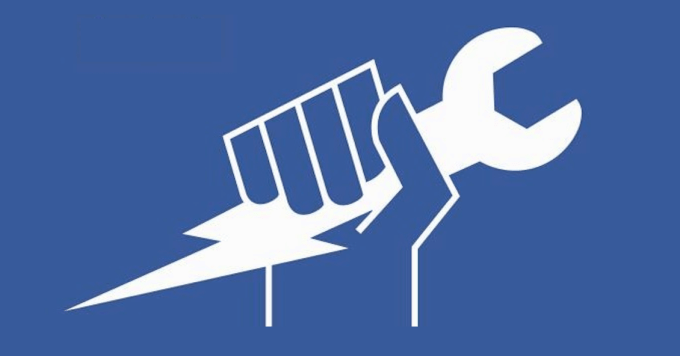
Calling on law enforcement to step up
“There are certain critical signals that only law enforcement has access to, like money flows. For example, our systems make it significantly harder to set up fake accounts or buy political ads from outside the country. But it would still be very difficult without additional intelligence for Facebook or others to figure out if a foreign adversary had set up a company in the US, wired money to it, and then registered an authentic account on our services and bought ads from the US.”
Instead of minimizing their own blame, the major players must unite forces
“Preventing election interference is bigger than any single organization. It’s now clear that everyone — governments, tech companies, and independent experts such as the Atlantic Council — need to do a better job sharing the signals and information they have to prevent abuse . . . The last point I’ll make is that we’re all in this together. The definition of success is that we stop cyberattacks and coordinated information operations before they can cause harm.”
The end of Zuckerberg’s utopic idealism
“One of the important lessons I’ve learned is that when you build services that connect billions of people across countries and cultures, you’re going to see all of the good humanity is capable of, and you’re also going to see people try to abuse those services in every way possible.”
Powered by WPeMatico
Nvidia today announced its new GPU for machine learning and inferencing in the data center. The new Tesla T4 GPUs (where the ‘T’ stands for Nvidia’s new Turing architecture) are the successors to the current batch of P4 GPUs that virtually every major cloud computing provider now offers. Google, Nvidia said, will be among the first to bring the new T4 GPUs to its Cloud Platform.
Nvidia argues that the T4s are significantly faster than the P4s. For language inferencing, for example, the T4 is 34 times faster than using a CPU and more than 3.5 times faster than the P4. Peak performance for the P4 is 260 TOPS for 4-bit integer operations and 65 TOPS for floating point operations. The T4 sits on a standard low-profile 75 watt PCI-e card.
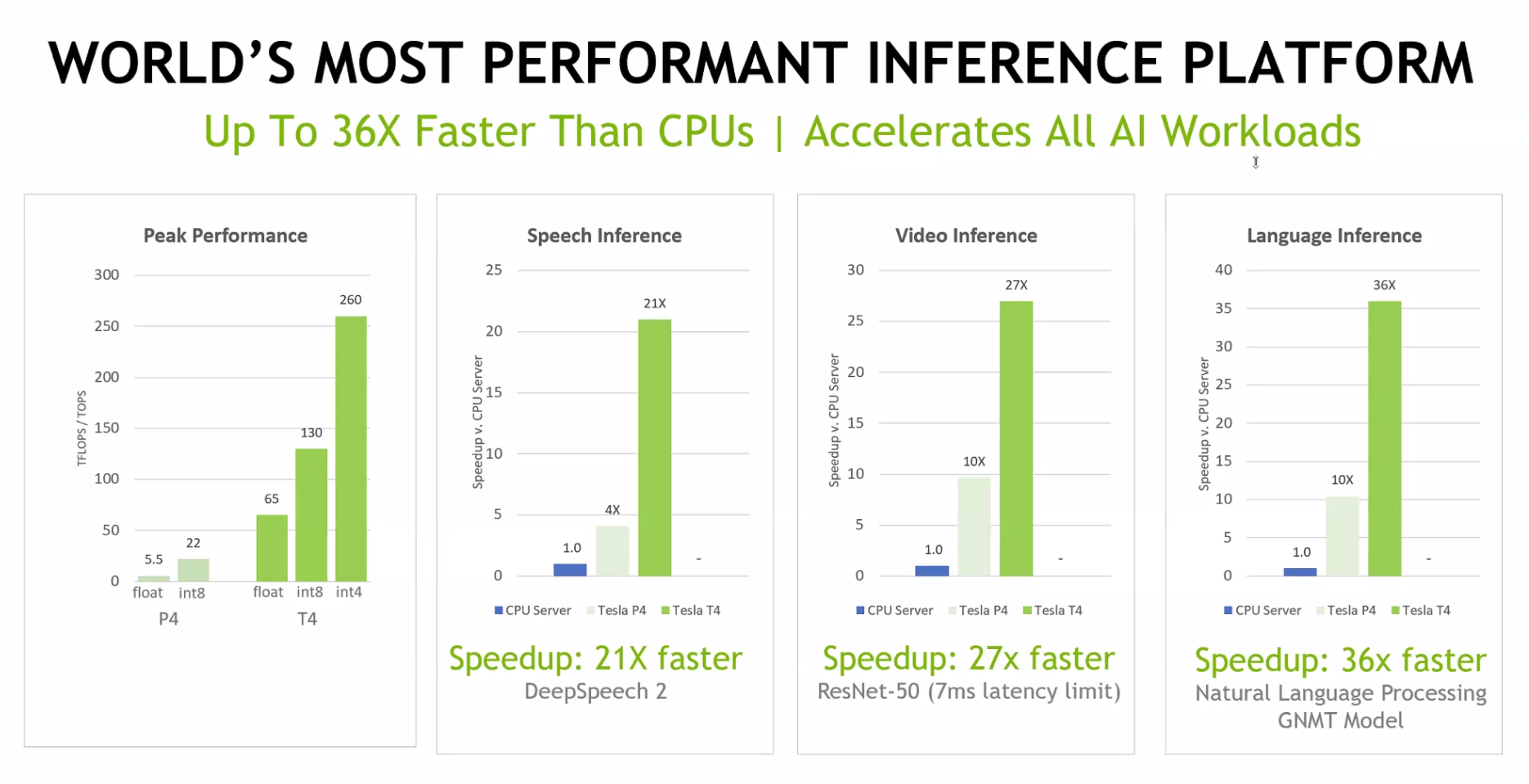
What’s most important, though, is that Nvidia designed these chips specifically for AI inferencing. “What makes Tesla T4 such an efficient GPU for inferencing is the new Turing tensor core,” said Ian Buck, Nvidia’s VP and GM of its Tesla data center business. “[Nvidia CEO] Jensen [Huang] already talked about the Tensor core and what it can do for gaming and rendering and for AI, but for inferencing — that’s what it’s designed for.” In total, the chip features 320 Turing Tensor cores and 2,560 CUDA cores.
In addition to the new chip, Nvidia is also launching a refresh of its TensorRT software for optimizing deep learning models. This new version also includes the TensorRT inference server, a fully containerized microservice for data center inferencing that plugs seamlessly into an existing Kubernetes infrastructure.

Powered by WPeMatico
StockX started as a marketplace for reselling sneakers but has since grown to be much more, bringing its transparent and anonymous marketplace to more verticals. Today the company is announcing a $44 million Series B that will help fuel international and domestic growth while letting the company expand to even more product categories and perhaps opening StockX stores.
The idea driving StockX is simple: Provide a marketplace with fair pricing and ensure the merchandise is authentic. The result scales to nearly day-trading in consumer goods in the same vein as oil futures. In some cases, the seller never touches the product. Sneakers and other in-demand products are priced and sold at rates set by the market rather than the seller. If a particular sneaker is in demand, the price increases.
StockX is among the fastest growing startups in Detroit and Michigan and currently employs 300 in Detroit and 50 in Tempe, Arizona. Founded in 2016 by CEO Josh Luber, COO Greg Schwartz and Dan Gilbert, founder and chairman of Quick Loans, the company has scaled to see more than $2 million in daily transactions and 800,000 users have sold or purchased items on StockX. Today, at an event in Detroit, Luber told the audience that the company is approaching a billion dollar run-rate.
The company has never been capital contrasted and CEO and co-founder Josh Luber told TechCrunch that the company never thought they would have to turn to institutional financing. That’s the comfort of having a billionaire like Gilbert as a co-founder; Luber said Gilbert was always happy to fund StockX.
“We didn’t need money,” Luber told TechCrunch the day before this announcement, adding. “It was really about having external people that that we thought added truly different values than we had around the table.”
Right now the company’s main marketplace centers around sneakers but StockX is built around a platform that works for most ecommerce. It’s a $5 billion market worldwide. Last year the company also launched marketplaces for streetwear, handbags and watches — all verticals with a strong demand in the secondary market.
Scaling the service requires more bodies. Since everything sold on StockX is authenticated — in person — it takes more hands to authenticate more items. With that comes more customer service employees and as the company grows, StockX will need more engineers.
The company is already growing fast but Luber seems ready to double down. In March StockX had 130 people. Today, it’s at 415. He thinks. He confesses it could be a slightly more.
“We have about 50 engineers today and I would quadruple that tomorrow if I could,” he said. “We have about 50 customer service people today. I think it would be safe to double that tomorrow just because the business is growing so fast and we obviously hope it continues to grow as we scale.”
If StockX is going to scale, it needs more employees to ensure the company’s core ethos does not soften. The new round of funding will go far in bringing in the people Luber is seeking including additional members of the C-suite. StockX is running without a CTO, CMO, or CFO — pretty much the entire leadership suite, Luber admits.
It seems this is part of the reasoning behind the funding. The company was not seeking funding but, as Luber tells it, as the company gained attention, investors increasing reached out requesting meetings. Of the meetings they took, there were two firms that meshed with Luber’s vision of growing a marketplace.
The new round of funding comes from GV and Battery Ventures including several high-profile investors including DJ Steve Aoki; model and entrepreneur, Karlie Kloss; streetwear designer Don C; Salesforce founder chairman and co-CEO, Marc Benioff; Bob Mylod, founder and managing partner of Annox Capital; Shana Fisher, managing partner at Third Kind Venture Capital; and Jonathon Triest, managing partner of Ludlow Ventures — only Mylod and Triest are based in the Detroit area.
StockX says it intends to use the funding to expand internationally. Right now StockX only advertises in the US and only supports purchases in U.S. dollars. Going forward it intends to open up local versions of StockX to better support key markets with support for local currency, language and marketing. The company could also open location operations to make shipping and receiving easier and faster.
“In some of these countries, we have, a pretty decent customer base where people are tendered on a VPN,” Luber said. “There are pictures of people that walk around China with a StockX tag hanging off their shoe.”
Fifteen percent of StockX sales currently come from international buyers.
Of the four product categories StockX current sells, sneakers and streetwear make up the bulk of the sales. Before expanding to different verticals, Luber tells me there’s a lot of room for growth in each of the current categories but expanding means more employees.
For instance, each streetwear brand is essentially a sub-vertical, he says, adding that if the company launches a new brand StockX has to assemble a staff around it with brand expertise to build the catalog and product authentication process.
StockX is not ready to announce what other type of products it might sell. Street art seems like one they’re exploring.
Despite the growth, Luber remains committed to Detroit. He said the company will always be headquartered in Detroit and was proud to point to the fact that StockX was the second largest tenant in Dan Gilbert’s marquee Detroit building, One Campus Martius. The company also operates a 30,000 square foot facility in Detroit’s Corktown neighborhood.
StockX could come to other cities though, Luber says. The company is talking about what a StockX “in-real-life” experience would look like: It could be retail, a brand experience, accepting products to be sold or additional operation centers. The company is exploring all the obvious candidates including LA, NYC, San Francisco and Portland.
Powered by WPeMatico
Snapchat’s sagging share price is making it tough to retain talent. Bobby Lo, founder and CEO of mobile search app Vurb that Snap Inc acquired for $114.5 million two years ago is leaving day-to-day operations at the company. That means Lo cut out early on his four-year retention package vesting schedule, which was likely influenced by Snapchat falling to new share price lows. Snap is trading around $9.15 today, compared to its $17 IPO price and $24 first-day close.
That’s down over 7 percent from yesterday following BTIG analyst Rich Greenfield gave Snap a sell rating with a target price of $5 saying “We are tired of Snapchat’s excuses for missing numbers and are no longer willing to give management ‘time’ to figure out monetization.” Greenfield is known as one of the top social network analysts, so people take him seriously when he says “We have been disappointed in SNAP’s product evolution (as have users) and see no reason to believe this will change.”
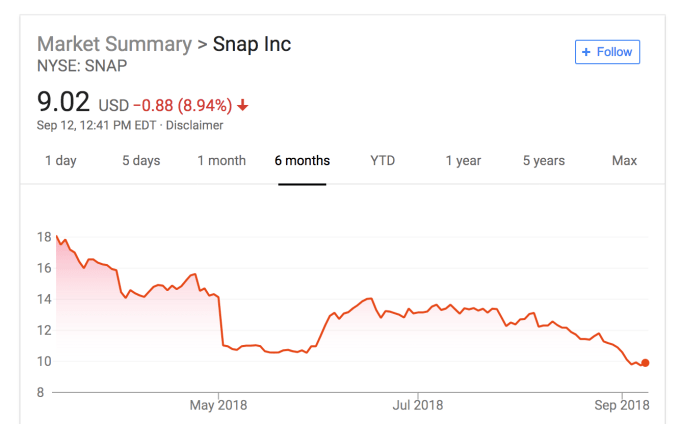
Vurb is a good example of this. The app let users make plans with friends to visit local places, allowing them to bundle restaurants, movie theaters, and more into shareable decks of search cards. It took over a year after the October 2016 acquisition for the tech to be integrated into Snapchat in the form of context cards in search. But Snap never seemed to figure out how to make its content-craving teen audience care about Vurb’s utility. Snap could have built powerful offline meetup tools out of the cards but never did, and lackluster Snap Map adoption furthered clouded the company’s path forward around local businesses.
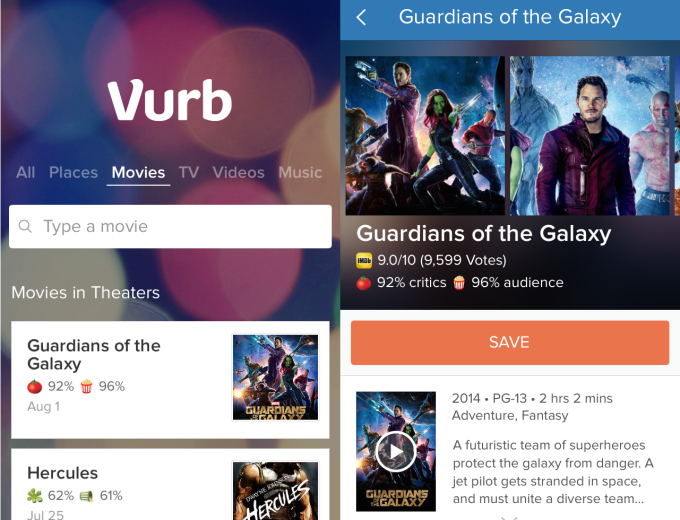
Now Lo tells TechCrunch of his departure, “Building experiences at Snap has been a wonderful culmination of my seven-year startup journey with Vurb. My transition to an advisor at Snap lets me continue supporting the amazing people there while directing my time back into startups, starting with investing and advising in founders.”
Lo was early to embrace the monolithic app style pioneered by WeChat in China that’s become increasingly influential in the states. Snap confirmed the departure while trying to downplay it. A spokesperson tells me, “Bobby transitioned to an advisory role this summer, and we appreciate his continued contributions to Snap.”
Given Snap is known to back-weight its stock vesting schedules, Lo could be leaving over half of his retention shares on the table. That decision should worry investors. As a solo founder, Lo already made off with a big chunk of the acquisition price that including $21 million in cash and $83 million in stock, so with the company’s share price so low, he might have had little incentive to stay.
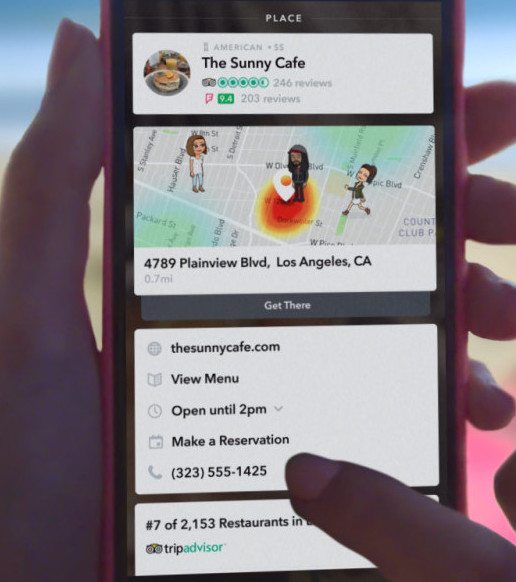
Snapchat Context Cards built from Vurb’s acquired technology
Since last July, Snap has lost a ton of talent including SVP of Engineering Tim Sehn, early employee Chloe Drimal, VP of HR and Legal Robyn Thomas and VP of Securities and Facilities Martin Lev, CFO Drew Vollero, VP of product Tom Conrad, TimeHop co-founder Jonathan Wegener, Spectacles team lead Mark Randall, ad tech manager Sriram Krishnan, head of sales Jeff Lucas, and just last week, its COO Imran Khan.
With its user count shrinking, constant competition from Facebook and Instagram, and talent fleeing, it’s hard to see a bright future for Snap. Unless CEO Evan Spiegel, without the help of his departed lieutenants, can come up with a groundbreaking new product that’s not easy to copy, we could be looking at downward spiral for the ephemeral app. At what point must Snap consider selling itself to Google, Apple, Tencent, Disney, or whoever will take on the distressed social network?
Powered by WPeMatico
XS is the normal one. XR is the cheap one. XS Max is the big one. That’s a good start to understanding Apple’s confusing naming scheme for its new line of iPhones. Apparently jealous of Android’s fragmentation, Apple decided it needed three different models, three different storage sizes and nine different colors.
You can think of the XS as the updated iPhone X, the Max as the new Plus and the XR as a revival of the great-for-kids budget iPhone SE. Here’s a comparison of their features, prices, options and release dates.
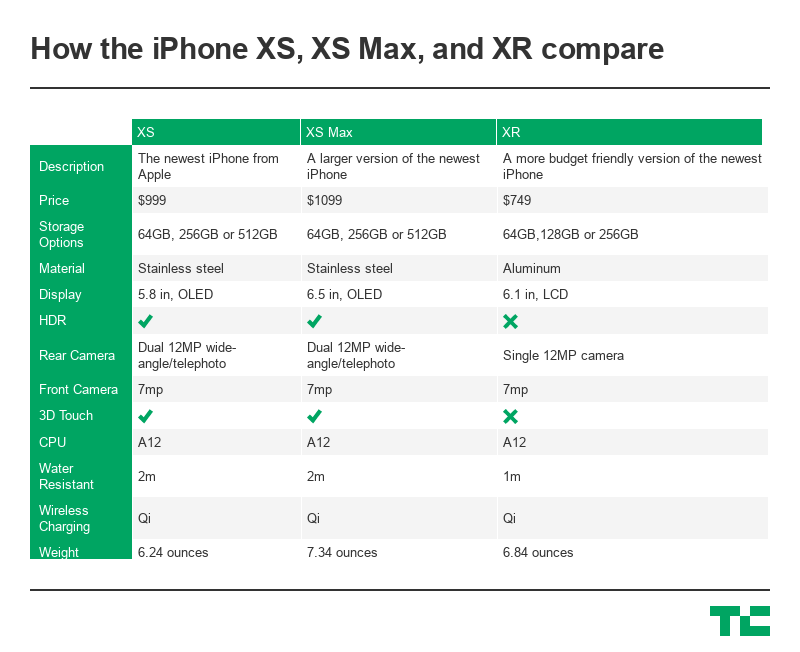
Apple’s new flagship phone is the iPhone XS. If you want the best Apple has to offer that will still fit in your pocket, this is the one for you.
It’s got a 5.8-inch diagonal OLED “Super Retina” HDR screen with 458 pixels per inch, which is actually taller than the old 8 Plus’s 5.5-inch screen, but it’s a little thinner, so it has less total screen volume. Dual 12 megapixel cameras offer stabilization and 2X optical zoom, plus the new depth control Portrait mode feature. It’s $999 for the 64GB, $1,149 for the 256GB, or $1,349 for the 512GB.
It comes in silver, gold and space gray, all in stainless steel that’s waterproof to two meters. Pre-orders start Friday, September 14th, and they ship and hit stores on September 21st.

If you love watching movies, browsing photos and shooting videos on your phone, you’ll want the iPhone XS Max.
The 6.5-inch OLED “Super Retina” HDR screen is the biggest ever on an iPhone, dwarfing the 8 Plus’s screen, yet with a similar device size since the XS Max takes up more of the phone’s face. The twin 12 megapixel lenses stabilize your images and offer 2X optical zoom, as well as Portrait mode depth control.
It also comes in stainless steel silver, gold and space gray that are all waterproof to two meters, and costs $100 more than the XS at $1,099 for 64GB, $1,249 for 256GB or a whopping $1,449 for 512GB. As with the XS, pre-orders start Friday, September 14th, and you can get it in your hands on September 21st.

Don’t need the sharpest or biggest new screen and want to save some cash? Grab an iPhone XR. Its size comes in between the XS and XS Max, with a 6.1-inch diagonal LCD “Liquid Retina” screen with 326 pixels per square inch.
Fewer pixels and no HDR display means the XR won’t look quite as brilliant as the XS models. The XR also only has one 12 megapixel camera lens, so it doesn’t offer stabilization or 2X optical zoom like its XS siblings, but it still gets the cool Bokeh-changing Portrait mode depth control.
The XR is only waterproof to one meter instead of two like its expensive sisters, and lacks 3D Touch for quick access to deeper features.

As a bonus with the XR, you do get 1.5 hours of additional battery life and six color options in the aluminum (“aloominium” if you’re Jonny Ive) finish: white, black, blue, yellow, coral and red. And it’s cheaper at $749 for 64GB, with $799 for 128GB and $899 for 256GB.
If that’s not cheap enough, you can now get the iPhone 7 for $449 and the iPhone 8 costs $599 — though there are no more iPhones with headphone jacks now that the 6S and SE are getting retired. In hopes that you’ll buy a pricier one, the XR arrives a month later than the XS models, with pre-orders on October 19th and shipping October 26th.
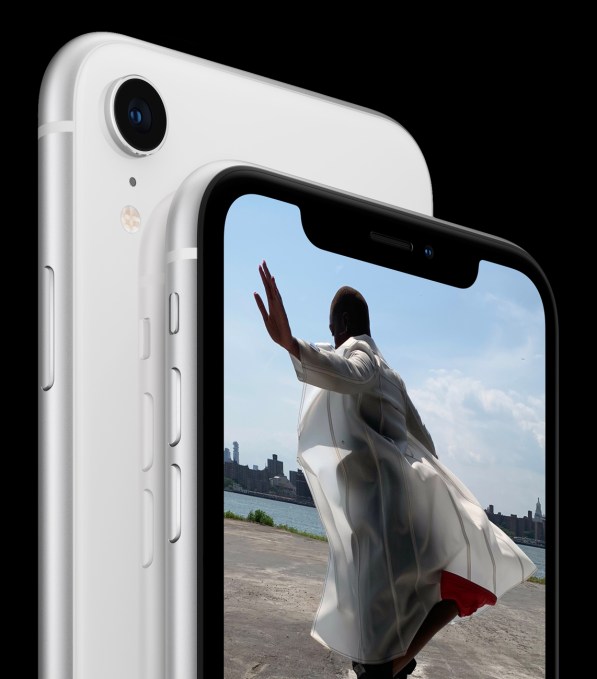
Apple may find this level of customization lets everyone find the right iPhone for them, though it could simultaneously produce decision paralysis in buyers who aren’t confident enough to pay. While it’s a headache at first, you’ll end up with a phone fit for your style and budget. Though without a ton of improvements over the iPhone X, you might not need an “iPhone Excess.”
Powered by WPeMatico
Another year, another set of brand spankin’ new iPhones. But this year, little has been left to the imagination as leaks have continued to spring up over the course of the past few months.
Today, however, the new iPhone becomes official. Apple has introduced a new models of the premium iPhone, the iPhone XS, which comes in three finishes, gold, silver and space grey.
So let’s take a look at the details.
The new iPhone doesn’t look all that different from the iPhone X, but that is always the case with the “S” years. The phones come in gold, silver and space grey and are made with surgical grade steel, as well as a new glass formulation for durability.
The Apple team has also upgraded the dust and water resistance of the iPhone, bumping it to IP68 rated, with water resistance up to 2 meters deep for several minutes. Schiller added that the phone was tested in many liquids, including orange juice, tea, wine and beer.
The new display on the iPhone XS is a Super Retina OLED display, but it has 60 percent greater dynamic range than the previous generation. Displays come in two sizes — 5.8-inch and 6.5-inch — with 458 pixels per inch.
The bigger phone is called the iPhone XS Max.
Unfortunately, on both models, that notch is still hanging out at the top of the phone, but not without good reason. Housed in that sliver of bezel is an infrared camera, flood illuminator, ambient light sensor, proximity sensor, speaker, microphone, front camera, and dot projector.

Much of this, of course, allows for FaceID to continue on this next gen of the iPhones. It has a faster secure enclave and faster algorithms have improved FaceID in the iPhone XS, with Phil Schiller saying it’s the most secure facial authentication in a smartphone ever.
Perhaps the biggest spec upgrade on the iPhone XS is the new A12 Bionic chip, the industry’s first 7nm chip with 6.9 billion transistors. It has a 6-core CPU, with two high-performance cores that are 15 percent faster and 40 percent lower power than the A11. There’s also a new 4-core GPU in the A12 that’s 50 percent faster with tessellation and multilayer rendering.
Plus, there is a new neural engine with an 8-core dedicated machine learning processor.
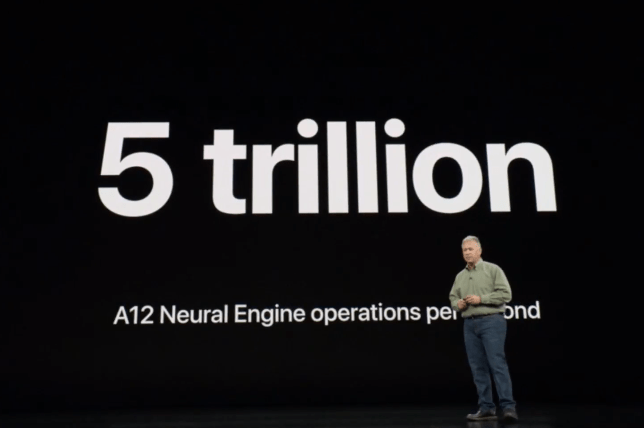
So how does that translate to real-world use? Well, the new iPhone XS is capable of 30 percent faster app opens thanks to that A12 Bionic chip.
As is standard with Apple, the company gave some other examples of how this processor will change the way we operate on our phones, including software upgrades from iOS 12 like AR, Memoji, and Siri shortcuts. Apple also did a demo from Bethesda showing off the A12 powering the new Elder Scrolls Blades game.
In the storage department, the iPhone XS comes with up to 512GB of storage.
The camera has always been a huge feature for the iPhone and this next generation is no exception.
The XS features a 12-megapixel wide camera and 12-megapixel telephoto lens sensor as part of the ongoing dual-camera system on the iPhone. There are, however, new sensors in the wide camera offering a f.18 aperture, with a f.24 aperture on the telephoto lens. TrueTone flash has also been updated with an advanced flicker-detect system.
On the front side, you’ll find a 7-megapixel camera with f2.2 aperture and a faster sensor.
The A12 Bionic chip is helping out, and is now part of the image processing chain with the Image signal processor inside. This offers better facial ‘landmarking’ for red eye reduction and improved portrait mode.
Plus, Apple is introducing something called “Smart HDR.” As Panzarino noted in the live blog, “basically it shoots additional frames of highlight and shadow detail and then uses the Neural Engine to pick the best ones to combine into an HDR photo. This is more frames and theoretically more range represented in the photo than iPhone X.”

Apple has also improved ‘bokeh’ effect, which is the removal of focus or the addition of blur in the background of portrait mode photos. The improvements allow for smoother transitions from foreground to background and better bloom of background shapes.
But it goes beyond the original shot. A new slider will allow users to adjust the depth of field related to a certain camera aperture, letting folks deepen or reduce the depth of field after the photo is taken.
In terms of video, the biggest and most obvious upgrade is that users can record full stereo audio.
For the first time, Apple is debuting dual-SIM support for the iPhone XS and iPhone XS Max. With the exception of China, this will be accomplished through eSIM (or, electronic SIM cards), which will give users the option for a physical SIM slot and a complimentary eSIM.
In China, the iPhone XS will be made with two physical SIM slots because Apple can’t do eSIM in that region.
Put plainly, dual-SIM support allows a user to have two phone numbers on a single phone, like a domestic phone number and an international carrier.
Both the iPhone XS and iPhone XS Max come in three configurations: 64GB, 256GB, and 512GB. The iPhone XS starts at $999, while the iPhone XS Max starts at $1099.
Pre-orders begin on Friday, September 14, and the products will ship (and be available in store) on September 21.
Powered by WPeMatico
Roy Raymond opened a little store called Victoria’s Secret, now one of the most popular lingerie businesses in the world, because he was embarrassed to buy lingerie for his wife in department stores.
The brand was founded on the premise that men needed a safe space to buy lingerie for women and women needed a larger variety of sexy, angelic bras and other intimates to wear for men.
But it’s 2018. Women, today, buy lingerie for themselves. They want to be comfortable and functional and beautiful all at the same time.
“[Victoria’s Secret] was always about the angel and the fantasy and a lot of push up and wire so women’s bodies could conform to a marketing campaign,” said Michelle Cordeiro Grant, founder and CEO of direct-to-consumer lingerie startup Lively, and a former Victoria’s Secret senior merchant. “Inspiring women to be Candice Swanepoel is not feasible for most women in the world. I wanted to create a product that is for women and by women.”
Recognizing the gap in the market for bras that don’t stab you with underwire, she built Lively. To date, the company has raised $15 million in venture capital funding, including a $6.5 million Series A investment from GGV Capital, NF Ventures and former Nautica CEO Harvey Sanders announced today.
“Previously, women had two rows of products in their drawer. One row they wanted to be seen in … and the other row was ones that were more basic and comfortable — but no nobody wanted to be seen in them.”
Though she began work on Lively before the #MeToo movement, Cordeiro Grant says it pushed the business forward in a big way. In the last year, the size-inclusive startup has seen 300 percent growth. What began as a direct-to-consumer company selling $35 bras and underwear has expanded to offer swimwear, activewear and loungewear. Physical retail is next.
“Women have been ready for a conversation like ours,” she said.
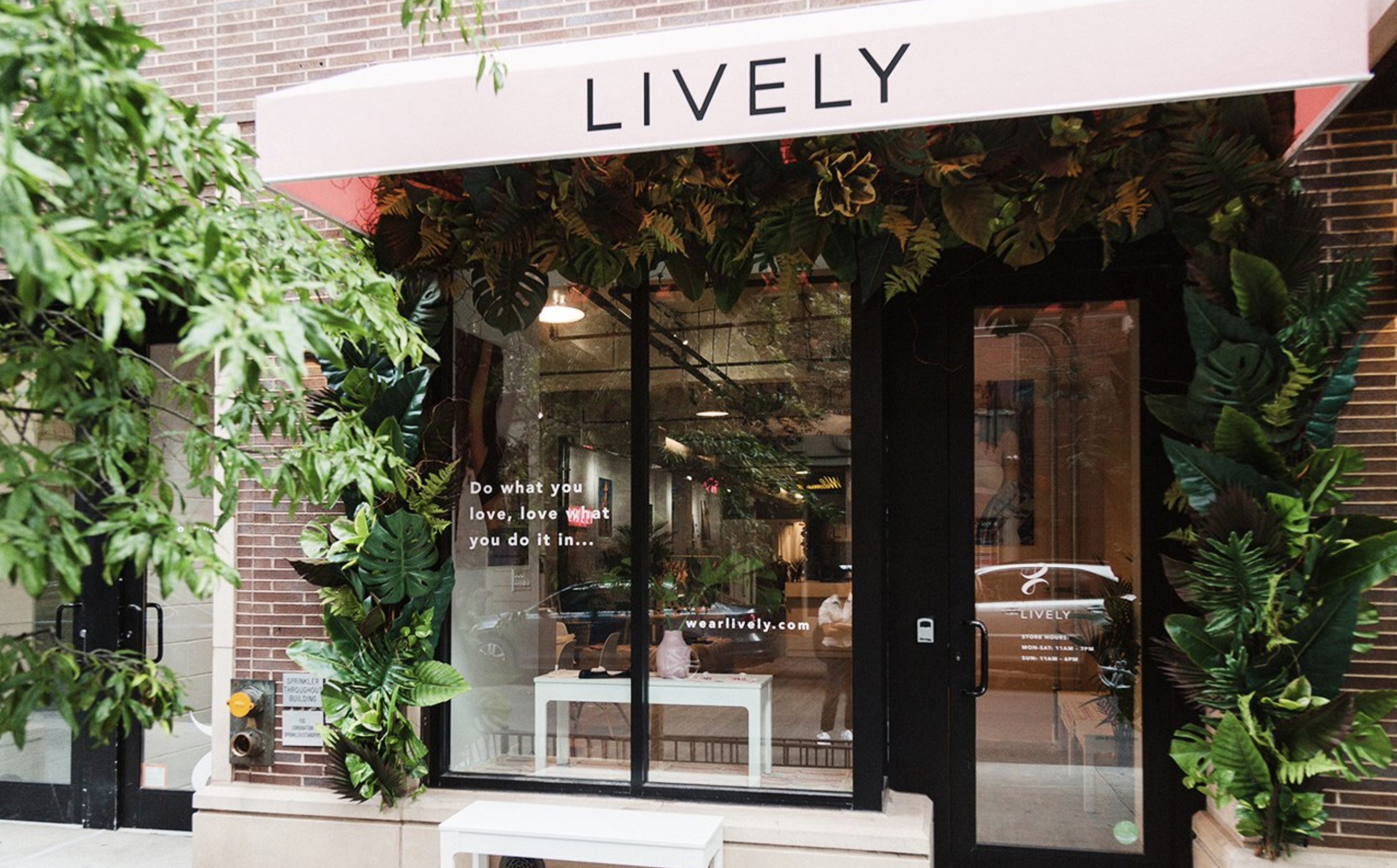
The startup is using the capital to open brick-and-mortar stores, a trend among other e-commerce businesses. The first of several stores in the pipeline, a 2,700-square-foot location, opened in New York City’s SoHo neighborhood this July. Stores in Chicago, Los Angeles and Dallas are also on the docket, as is a partnership with Nordstrom that will have Lively selling a limited distribution of intimates across 11 stores beginning next week.
Lively competes with several other brands of direct-to-consumer lingerie and activewear, including ThirdLove, AdoreMe, TomboyX and Outdoor Voices.
Powered by WPeMatico